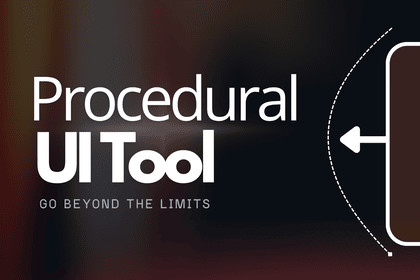
Procedural UI Tool is a high-performance, non-destructive styling solution. Elevate your project's visual quality with dynamic rounded corners, customizable borders, and progress indicators.Welcome to the lite version of UI Effects Pro:Stop wasting time creating countless image assets for UI variations. With Procedural UI Tool, you can design, iterate, and implement stunning UI effects directly within the Unity editor, saving hours of development time while achieving a polished, professional look.Key Features:Live-Preview Editor Window: A centralized hub for creating and editing effects. See every change in real-time on your selected UI objects without ever entering Play Mode.Non-Destructive Workflow: Add effects to any existing UI element safely. The tool works alongside your current setup, never permanently altering your components.Reusable Style Profiles: Create a library of ProceduralUIProfile assets. Perfect for establishing a consistent design language for panels, buttons, icons, and more.Progress Indicators: Effortlessly convert any border into a circular or radial progress bar, complete with adjustable start angle and direction. Ideal for health bars, loading spinners, and ability cooldowns.Advanced Border & Corner Control:Dynamic Corner Radius: Use absolute pixels for precision or percentages for responsive, resolution-independent designs. Control all corners at once or each one individually for complex shapes.Customizable Borders: Set border width and color with ease.Automated Pipeline Detection: The tool automatically detects whether you are using the Built-in Render Pipeline or URP and applies the correct, optimized shader. No setup required.Multi-Language Support: The editor is fully localized for English, Spanish, German, and Chinese to enhance usability for international teams.Whether you're building a sleek modern interface, a stylized game HUD, or a data-rich application, Procedural UI Tool provides the performance and flexibility you need to bring your vision to life.If you search the really ALL IN ONE tool, UI Effects Pro is your answer!Artificial Intelligence (AI) tools were utilized during development as an assistant for code refactoring and cleanup. The primary use was to improve code structure, enhance readability, and ensure consistent styling across the entire project. All AI-generated suggestions were manually reviewed and approved to guarantee quality and correctness.







